This Week At Angama #50
18 January 2019 | This Week at Angama | Adam Bannister

Often it can be hard to convey how long it can take to capture the perfect wildlife photograph, not just on this blog, but in general. Of course, you can get lucky and go out for a few hours and everything aligns: the light, the angles, the action, it all just happens. Other times, it takes a lot of patience and even more luck. This week I wanted to celebrate the 50th This Week At Angama (TWAA) with quality photographs of the tiny Angama Pride cubs that were born last month. I had done my homework and knew where the den site was. Every morning I would be out at first light and would park as quietly as I could and wait. If it was clear the mother was not there I would leave; if the mother was there I would stay – sometimes for hours, hoping to get a photograph of the Mara Triangle’s newest arrivals. Over the last five days I have spent just under 12 hours sitting in silence at the den without a single shot. Disappointed? Yes. Wasted time? Not at all. As a wildlife photographer, I find sitting in nature therapeutic and to wait in the presence of a lion, even a sleeping one, is special. Of course, there are other guests and guides who were lucky this week and went home with photos of the cubs. I will keep trying though, doing what I can to see these precious animals, always with respect and love. And when the cubs are tucked away in the den sleeping, I will continue to explore the Mara – there is magic around every corner here.
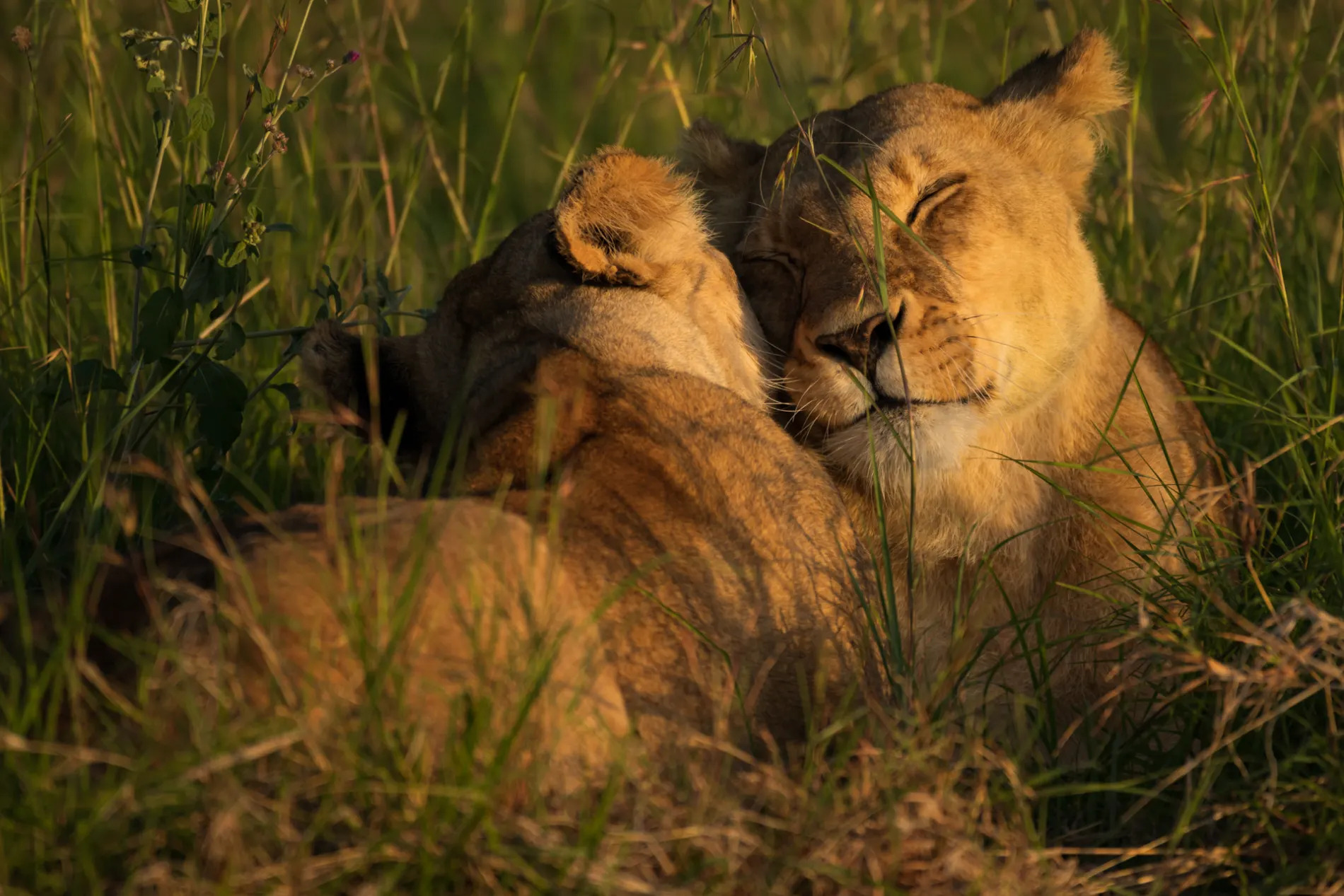
Here is the cub’s mother (with her back to us) with a lioness that I assume is her sister. These two females are as thick as thieves. The morning light drapes them in gold. Licking and snuggling together reaffirms their bond. Below them, just out of frame, is the den – a deep erosion gully – the perfect place to protect three cubs. [f 5.6, 1/1000, ISO 500]

With cubs so young, the Angama Pride appear to have reduced their movements substantially. This multi-generational pride has provided some exceptional viewing this week. [f 5.6, 1/1600, ISO 640]

A flick of the tail. With me almost living with the Angama Pride this week, I have started to pick up on some of the subtle nuances and character traits. [f 5.6, 1/2000, ISO 400]
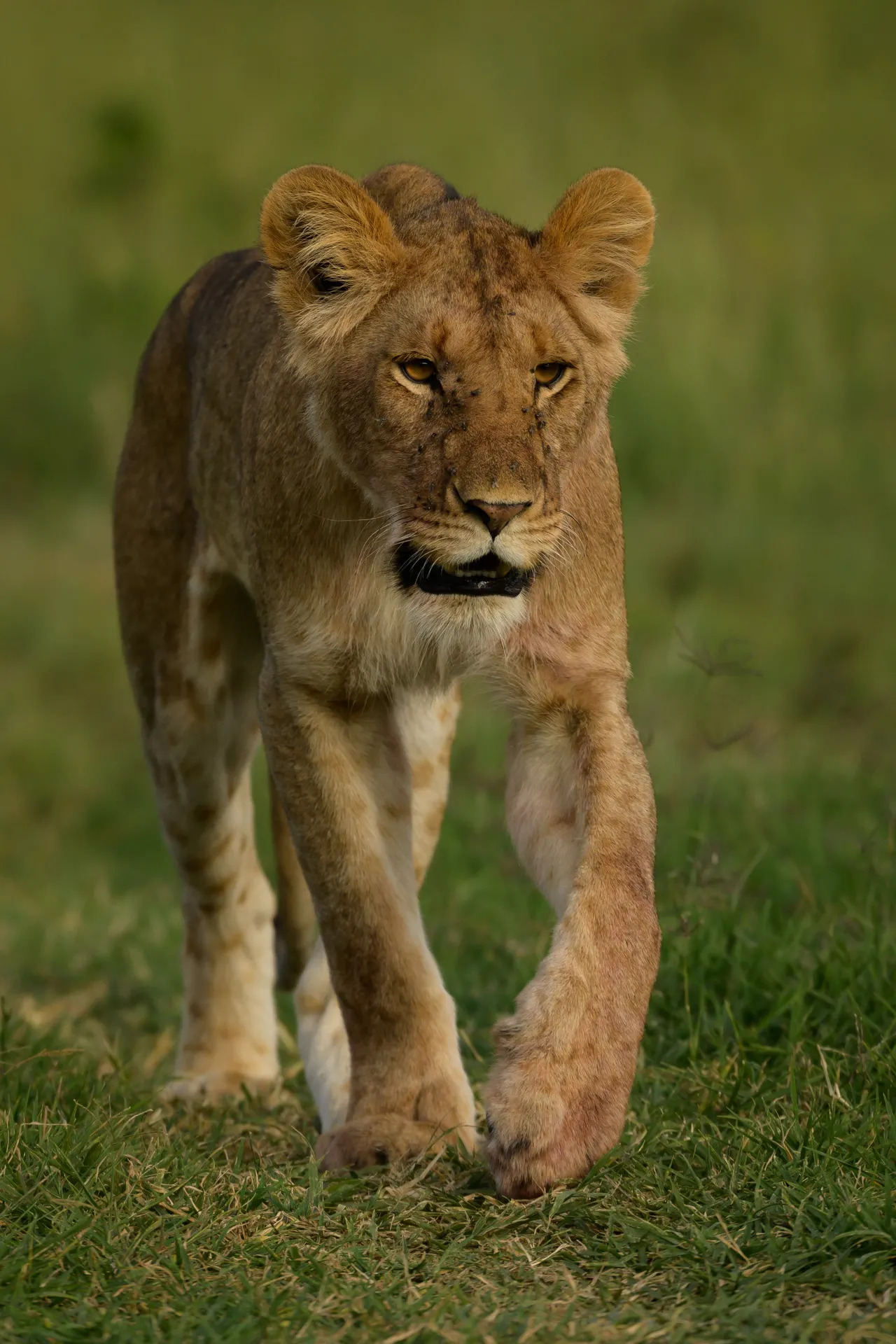
I love how sub-adult lions have huge paws which seem completely out of proportion with the rest of their bodies. [f 5.6, 1/2000, ISO 640, 0-67]
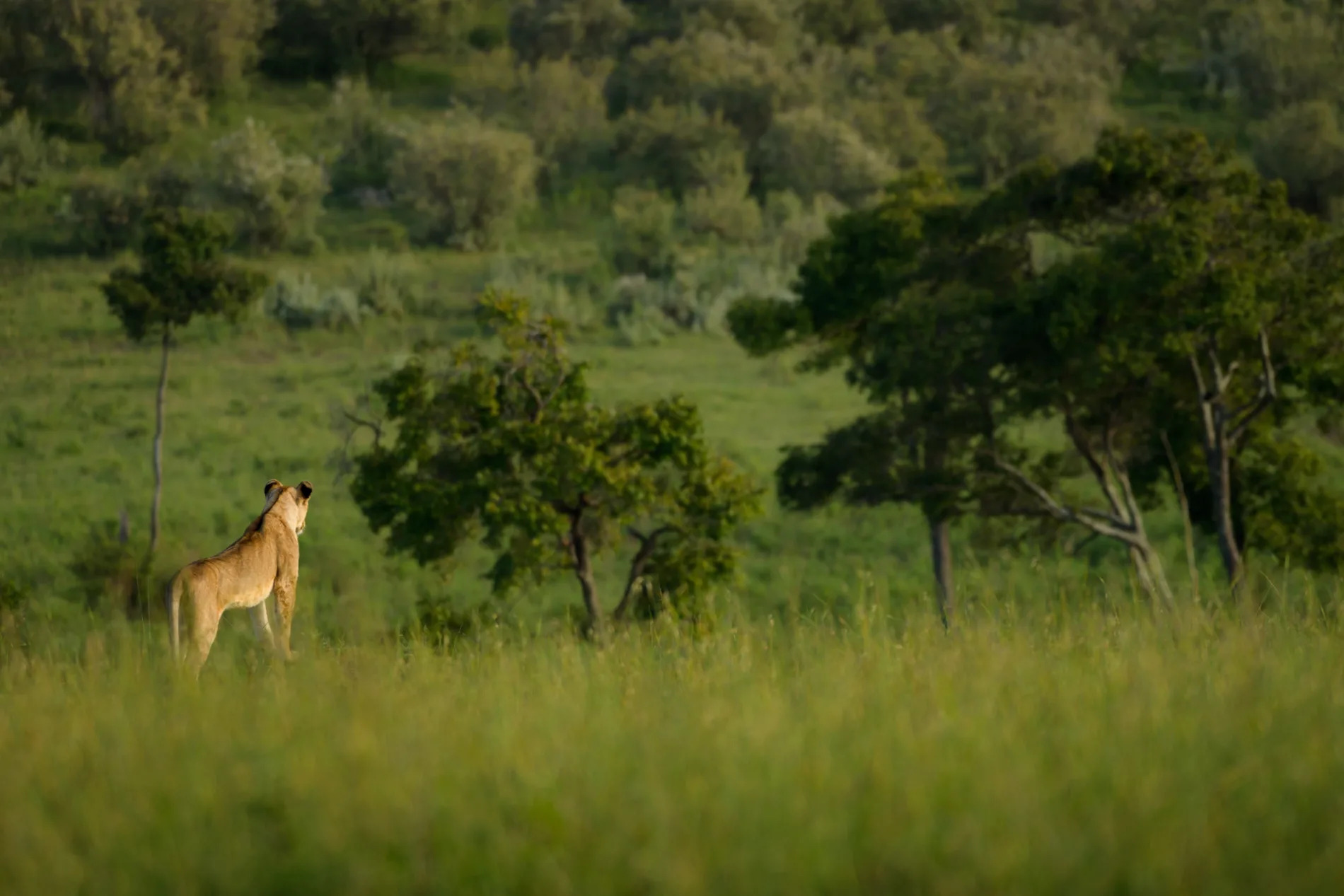
Another member of the Angama Pride climbs a termite mound for a better vantage point. Warthogs have been on the menu regularly of late. [f 5.6, 1/320, ISO 250, -0.67]

As with all animals, I find it fun to photograph individuals at different distances and with different zooms. Here I opted for an extreme close up of one of the sub-adult males in the pride. With the arrival of these new cubs, this male and his brothers’ future is uncertain. [f 5.6, 1/640, ISO 640, -0.33]

It wasn’t only lions this week. Patience and hard work paid off as the Angama guides searched long and hard for leopard. We were treated to the most magnificent sighting of the Shepard Tree male relaxing in a tree. [f 5.6, 1/1600, ISO 400, +0.33]
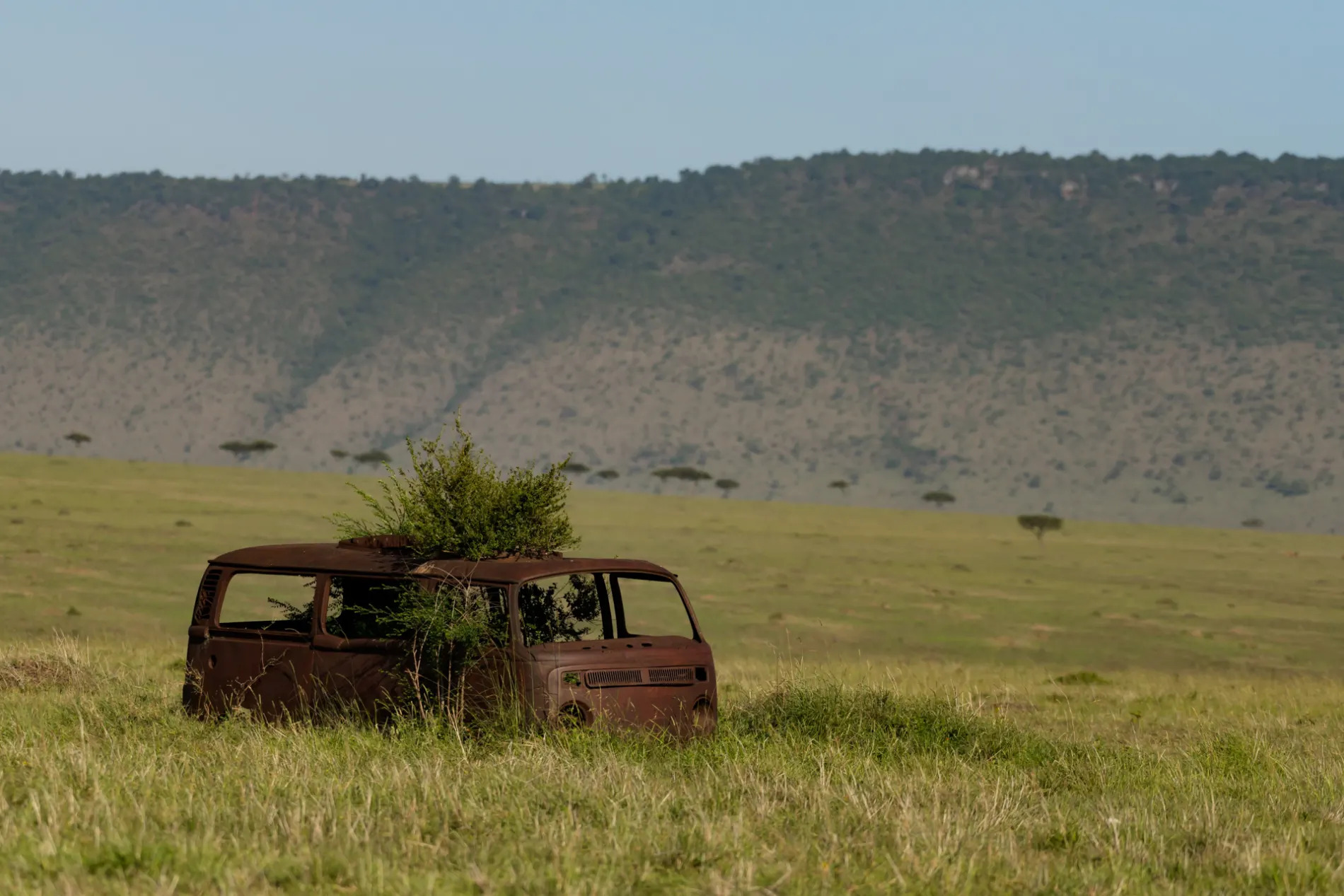
One of the many joys about searching out new animals in the bush is discovering hidden gems. I am sure there is someone reading this blog who can give me the full story behind this burnt out mini-bus that sits in the middle of nowhere in the Mara. I have heard a number of rumours and tales, but nothing convincing. No road goes anywhere near it and I quite enjoy that it has never been removed. For me there is an air of mystery around it and the tree growing through the roof shows that no matter what we do, Mother Nature will have the final say and will claim it all back. [f 5.6, 1/4000, ISO 400, -0.33]
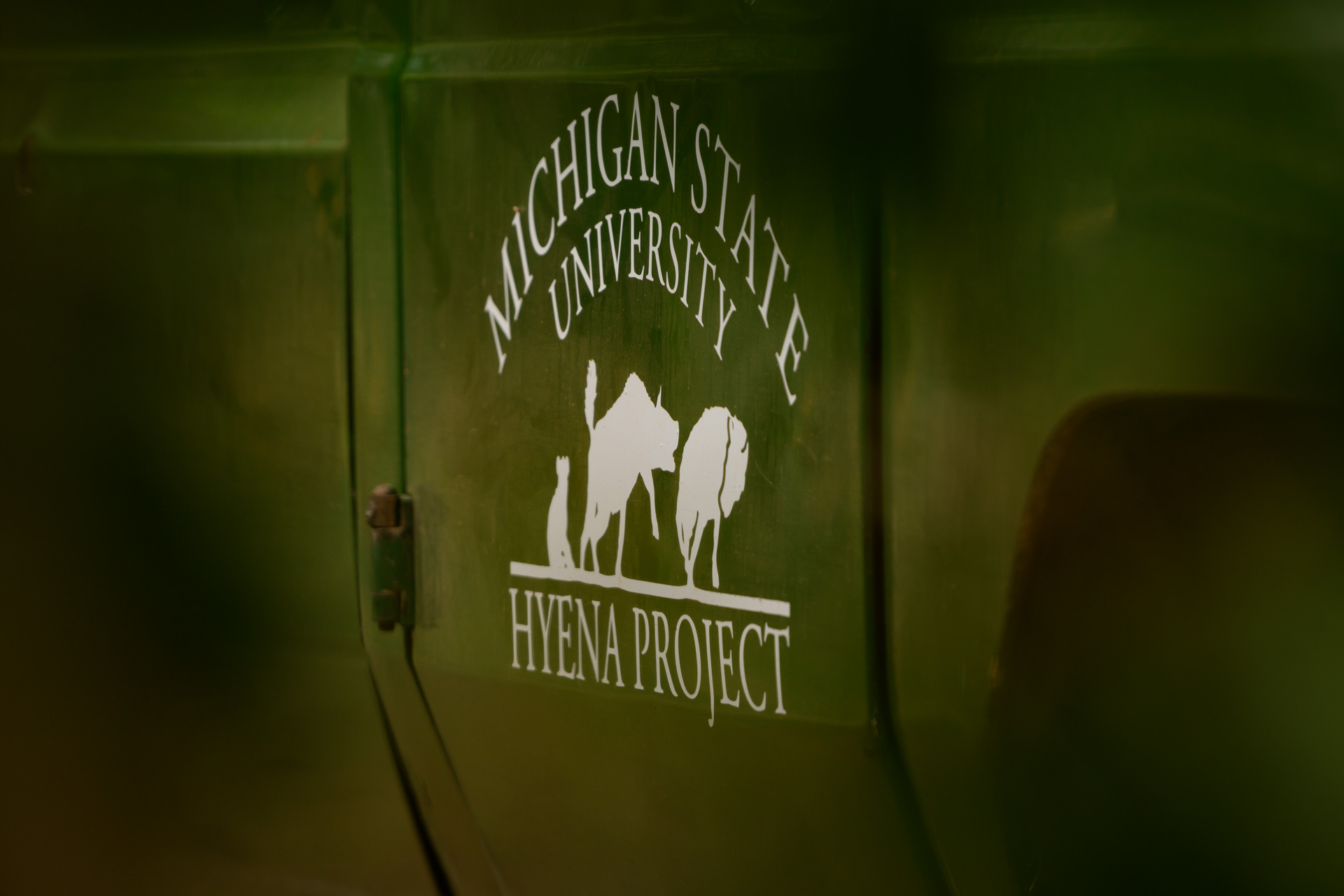
Whilst on the theme of patience, this week I spent a night with the Hyena Project team. You can see the blog and video I wrote on this experience here, but there can be few as patient with animals as these researchers. They sit for hours on end with hyenas noting down their every move. [f 5.6, 1/160, ISO 200, -0.67]
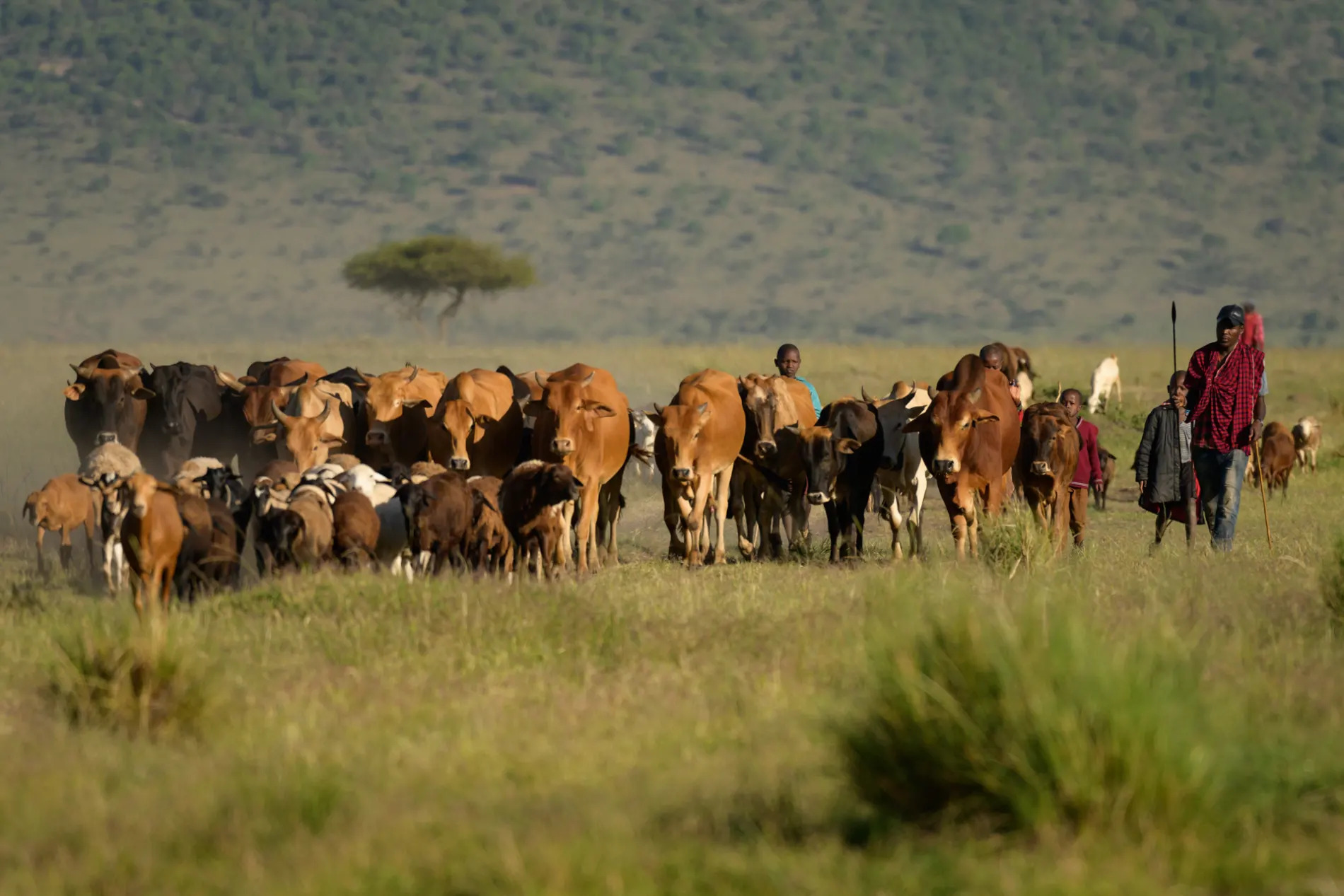
An experience and visit to the Mara is not complete without including the Maasai culture. Since the Mara Triangle was proclaimed a national park back in the early 1970s, the Maasai people have access on specific dates to a particular part of the park called ‘The Salt Lick’. Here, a natural spring allows for nutritional grazing and the mineral laden soils supplement the livestock’s diet. There is a wonderful understanding and respect between the park management and the people whom historically would have called this land home. [f 5.6, 1/4000, ISO 500, -0.33]

I have been at Angama for a year now, and this week was the first time I witnessed the spectacle of the cattle, goats and sheep being escorted down to ‘The Salt Lick’. Purists may say that this should not be allowed, but my opinion is more pragmatic. In order for this land to be retained for wildlife preservation and tourist enjoyment, it is crucial the local people benefit and that some graces are given. [f 5.6, 1/3200, ISO 400, -0.67]
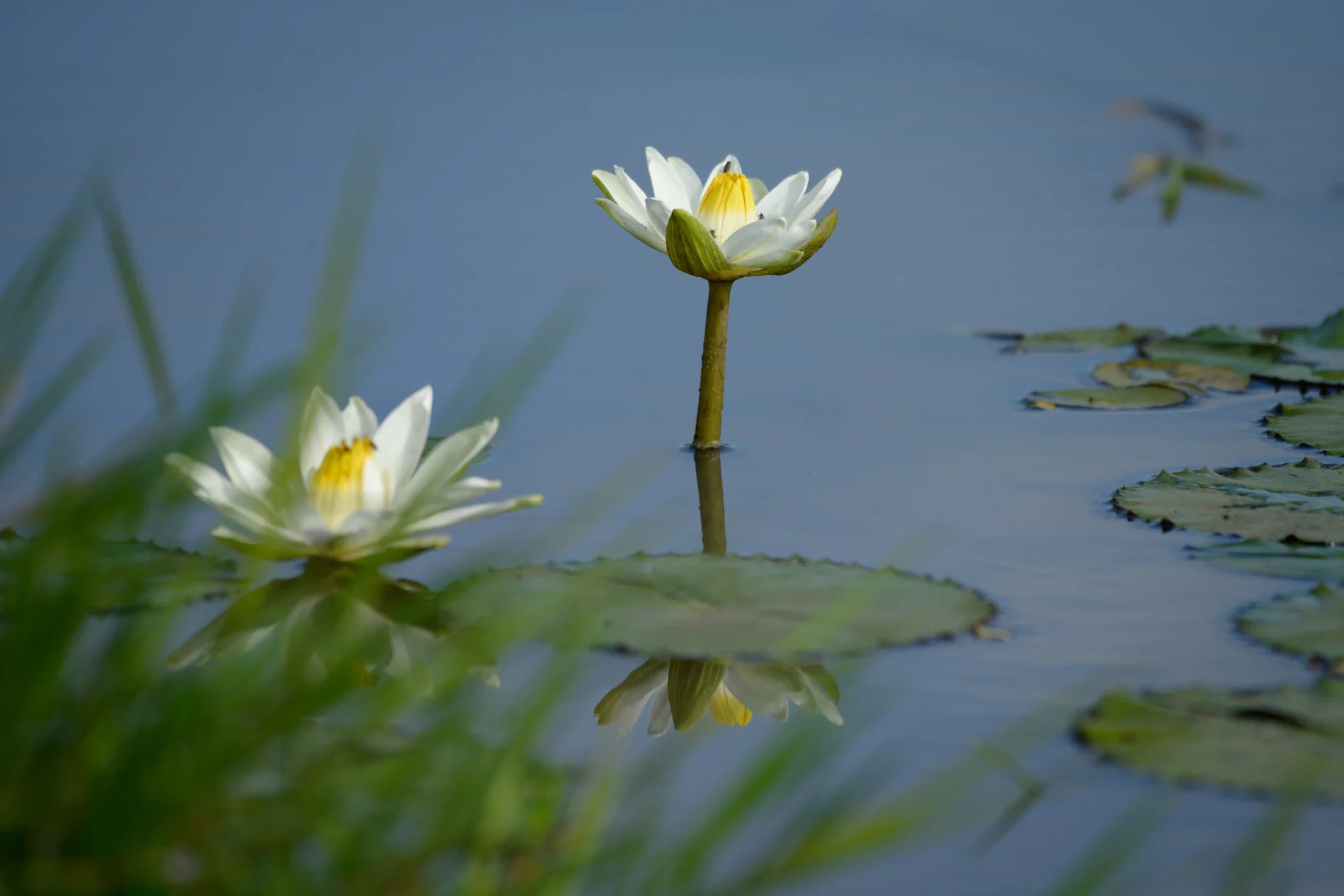
Slowing down a game drive and allowing yourself to sit with a sleeping animal for an hour allows you to notice the smaller, beautiful things that are often overlooked. [f 5.6, 1/2000, ISO 400]
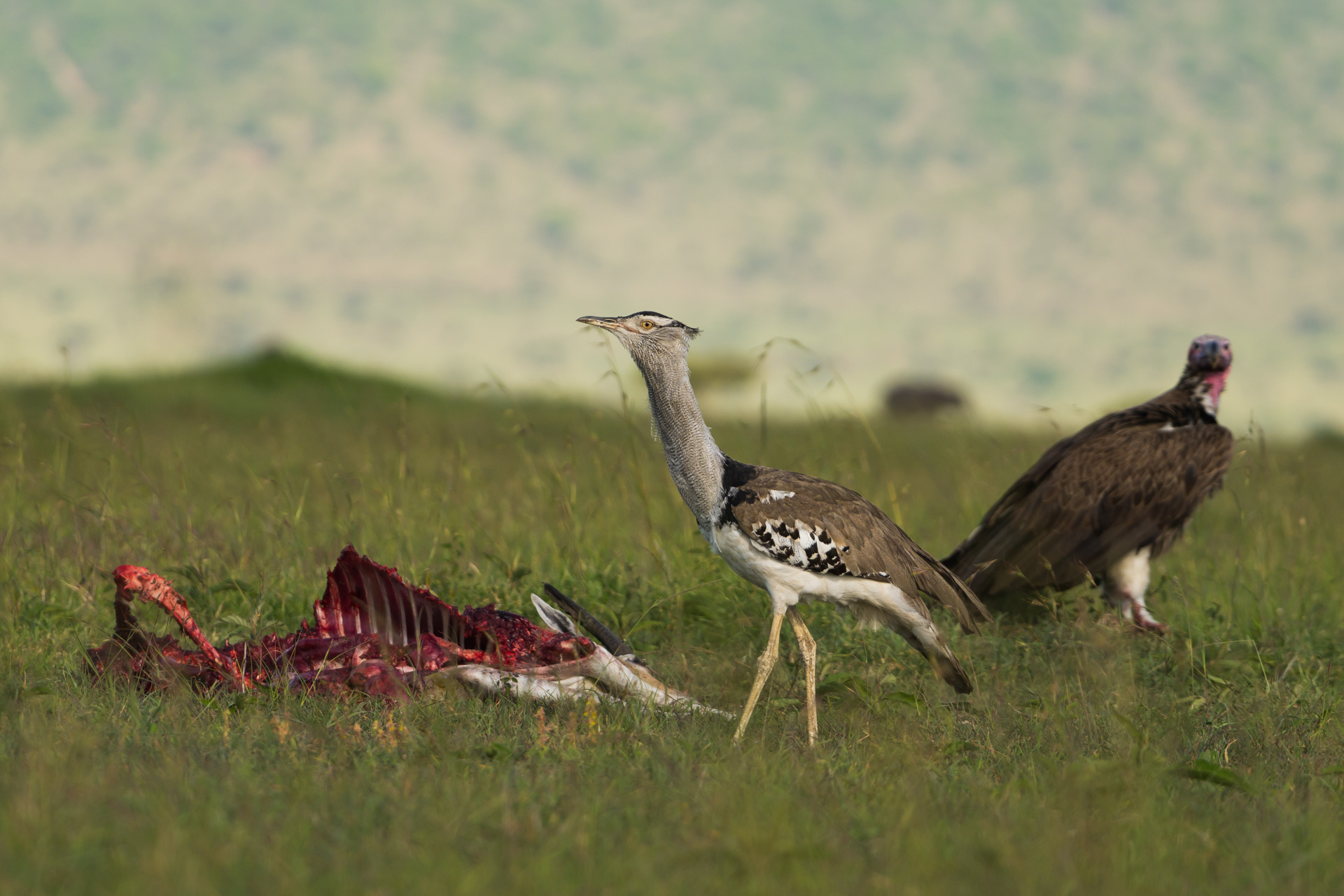
This week’s highlight for me came in the form of two rather large birds. A female cheetah had killed a Grant’s gazelle and had allowed her two sub-adult cubs to feed. Satisfied and full, the three cheetahs moved off to sleep in the shade of a nearby tree. A lappet-faced vulture descended and started feeding on the carcass. Half an hour later he was joined by a pair of kori bustards (the heaviest flying bird in Africa). I watched in disbelief as one of the kori bustards started to feed on the carcass alongside the vulture. I had never seen or heard of a kori bustard eating carrion, so assumed he was plucking the insects off of the meat. That notion was dispelled when I saw him take a large chunk of meat and throw it into the air and down his gullet. Eleven years in the bush and I had never seen this before! [f 5.6, 1/3200, ISO 400, -0.67]
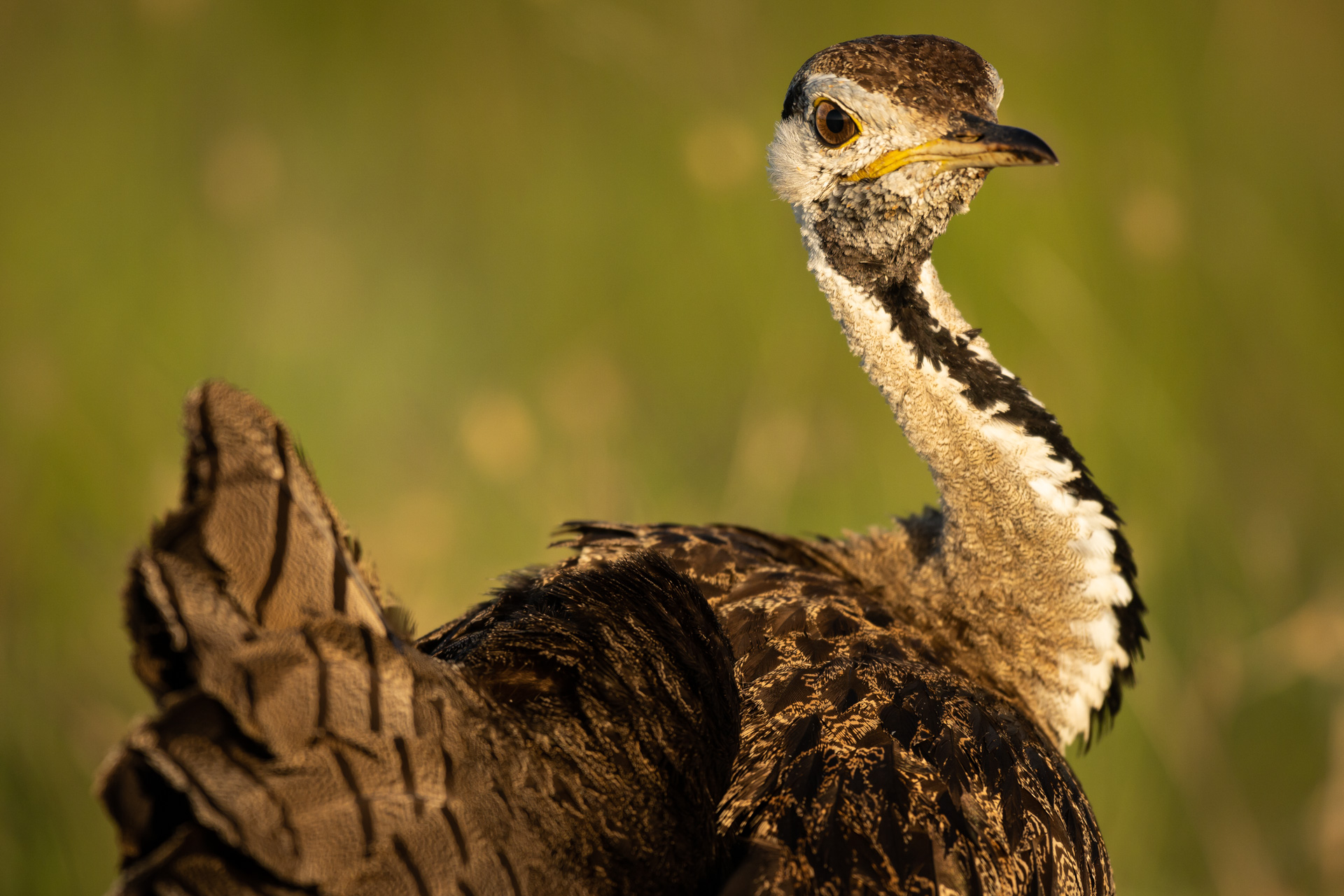
Smaller then a kori bustard, but within the same family, is the black-bellied bustard. With the males in full display mode at the moment, they make for ideal models. [f 5.6, 1/1600, ISO 500]

Many of them are extremely relaxed and allow you to get up close. Lots of people have been asking me about the sharpness and focusing capabilities of the new mirrorless Nikon Z7…well, here is the proof when you get it right. [f 5.6, 1/1250, ISO 500 (taken at 500mm with a 200-500mm f5.6)]
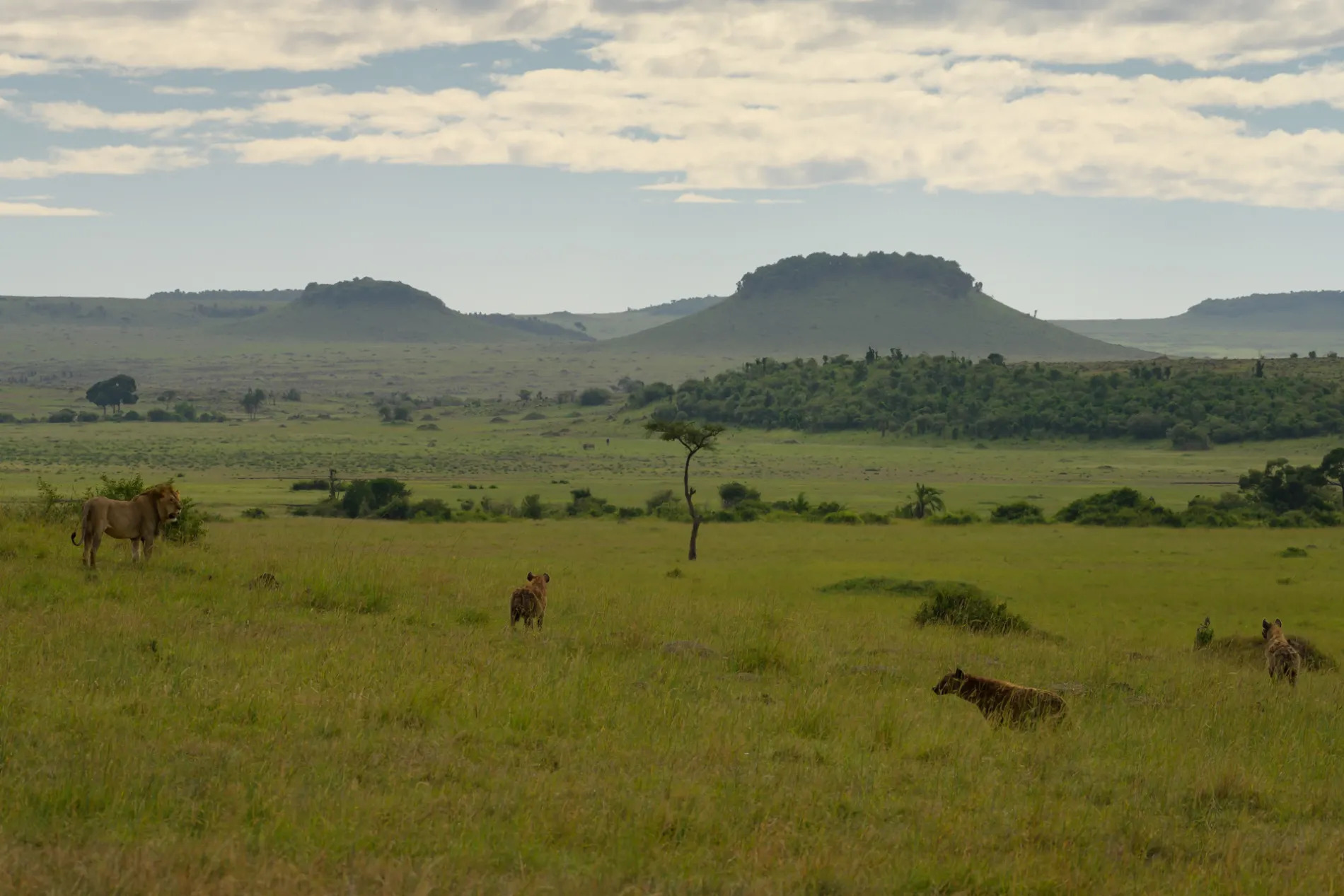
Whilst exploring the inselbergs along the Kenyan/Tanzanian border I came across a clan of over 40 hyenas that had obviously just chased a large male lion off a buffalo kill. My first priority, in terms of photography, was to try and capture the scene and the beauty of the backdrop. [f 11.0, 1/1000, ISO 400, -0.33]
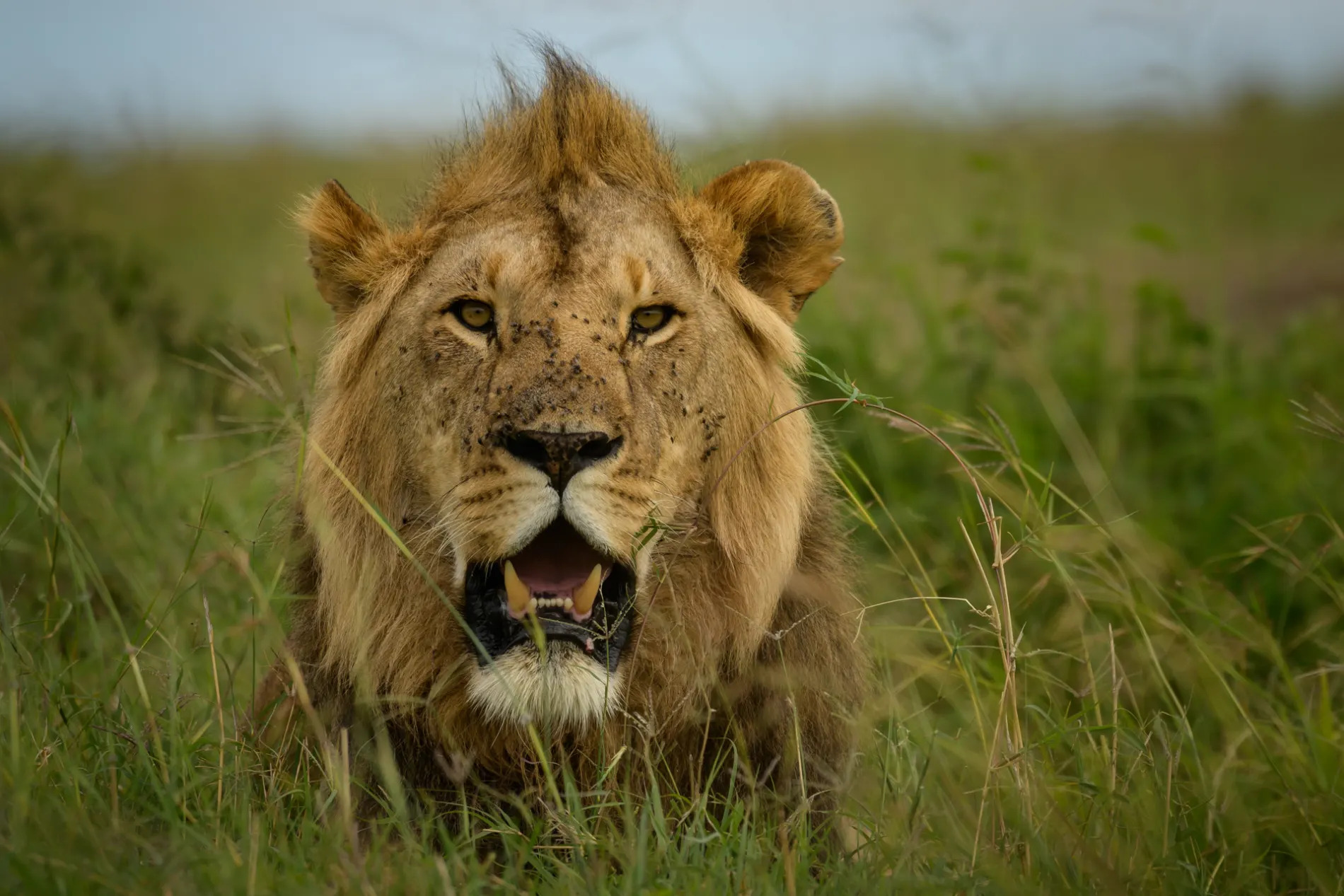
After that I wanted to get a good picture of the characters. I started off with a good low-level shot of the big male lion. He is in gorgeous condition. [f5.6, 1/1600, ISO 400]
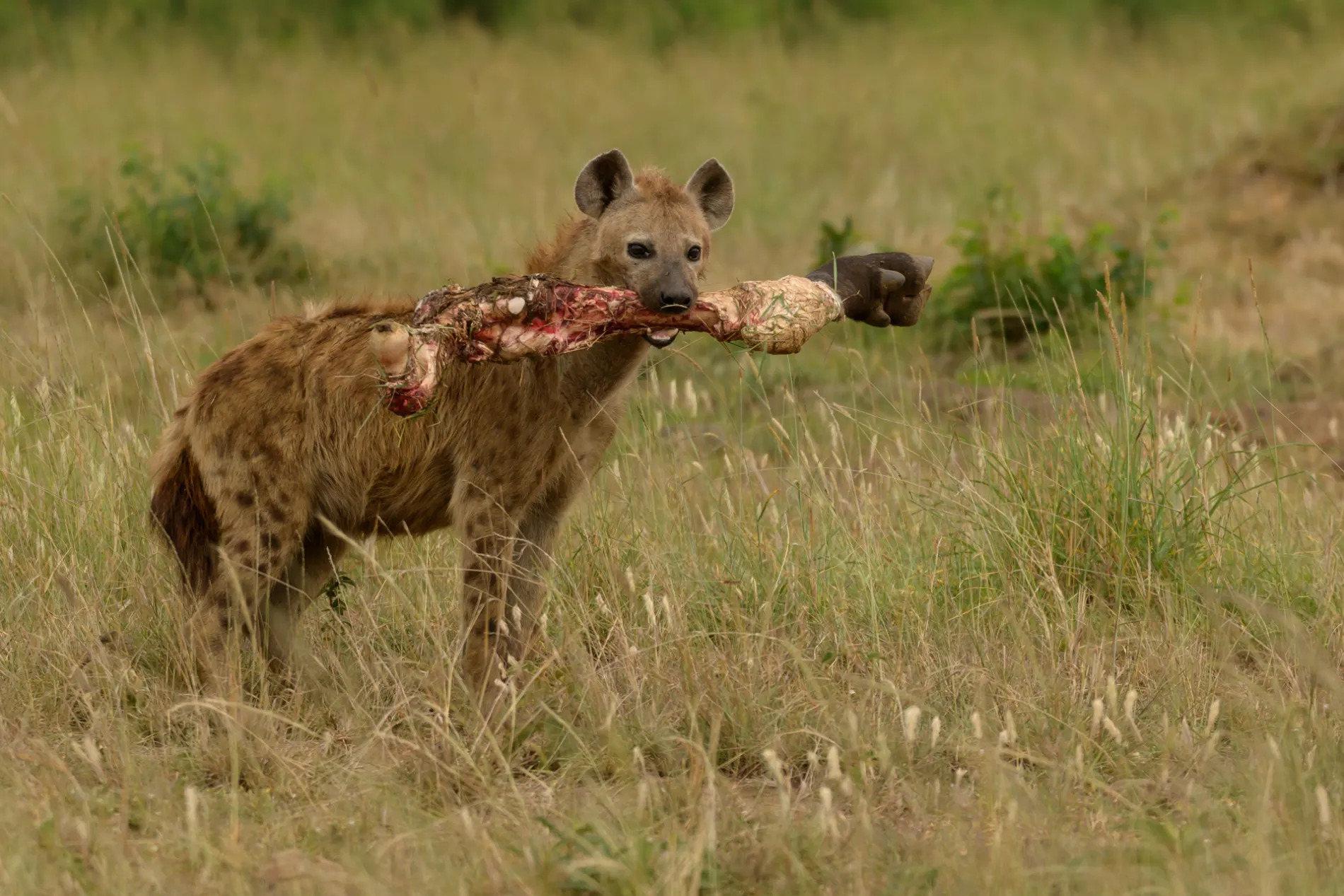
The greatest challenge was to get one of the hyenas to stand still and show off enough of the carcass to complete the story – eventually after I had been waiting for over an hour, a single clan member picked up the entire leg of the buffalo allowing for the perfect image to wrap up the story. [f 5.6, 1/1600, ISO 400]

Sometimes it pays to just release the pressure of wanting to find something specific and instead, simply let nature deliver. This was the case on Wednesday morning when I went out with a few guides to go and explore the lesser driven roads. By sheer luck we stumbled across the Ol Dony Paek male and beside him was the lioness from the Sausage Pride affectionately called ‘Tree Climber’. Beside her were four tiny cubs. My estimate at this stage is that they are in the region of three to four weeks. [f 6.3, 1/2000, ISO 500]

And so I am absolutely delighted to say that in our 50th week of TWAA, I was able to achieve what I had envisaged: a lioness carrying her tiny cub – priceless! [f 6.3, 1/1600, ISO 500, -0.33]
TAGGED WITH: Wildlife, Birds, Maasai Mara, Maasai Culture, Mara Triangle, Hyena, Wildlife Photography, Leopards of the Mara Triangle, Lion, Lions of the Mara, Hyena Project


